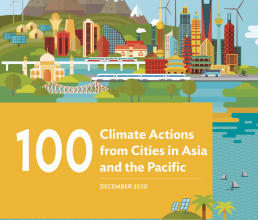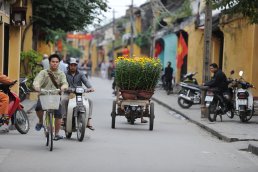First appeared in

Asian Development Bank
100 Climate Actions from Cities in Asia and the Pacific
Two cities along Viet Nam’s vulnerable central coast are investing in climate-proof infrastructure and adaptation plans to improve their urban environments and climate resilience.
Two cities along Viet Nam’s vulnerable central coast are investing in climate-proof infrastructure and adaptation plans to improve their urban environments and climate resilience.
Dong Hoi and Hoi An, two important tourism centers that are located along some of Viet Nam’s most disaster prone coastal areas, are attempting to develop urban infrastructure that is sustainable and able to keep pace with rapid growth. The project will run until 2023, and efforts will center on climate-proofing existing and new developments through improvements to stormwater and flood management, erosion prevention, and salinity control.
$2M
REDUCTION IN DAMAGE FROM COASTAL FLOODING PER YEAR
Urban developments on the Bao Ninh Peninsula in Dong Hoi and along the Co Co River in Hoi An will include integrated flood management in the form of vegetated buffer zones to control water surges and sand dune restoration, an increase in the storage capacity of a reservoir, the establishment of a forecasting and warning system, and the creation of an evacuation route. The Lai Nghi Reservoir, an important water source, will also be protected against salinity intrusion, and zoning and vegetation will be introduced to protect coastal dunes from erosion.
The project has a budget of $144 million, $104 million of which is provided by ADB and the Urban Climate Change Resilience Trust Fund.

Dong Hoi and Hoi An recognize the importance of sustainably building their tourism sectors and strengthening their capacity to respond to climate change (photo by ADB).
The Challenge
Dong Hoi and Hoi An have been threatened repeatedly by floods and typhoons. As rapidly growing mid-sized cities with tourism as their development drivers, both must ensure that urban infrastructure development considers climate resilience.
Co-Benefits
Economic Coastal protection, improved roads, health services, water supply, and wastewater connections will result in savings for communities and increase the economic value of the area.
Social Upgrades to urban infrastructure will allow for sustainable growth in tourism sectors, and real-time information will allow residents to quickly react to floods.

